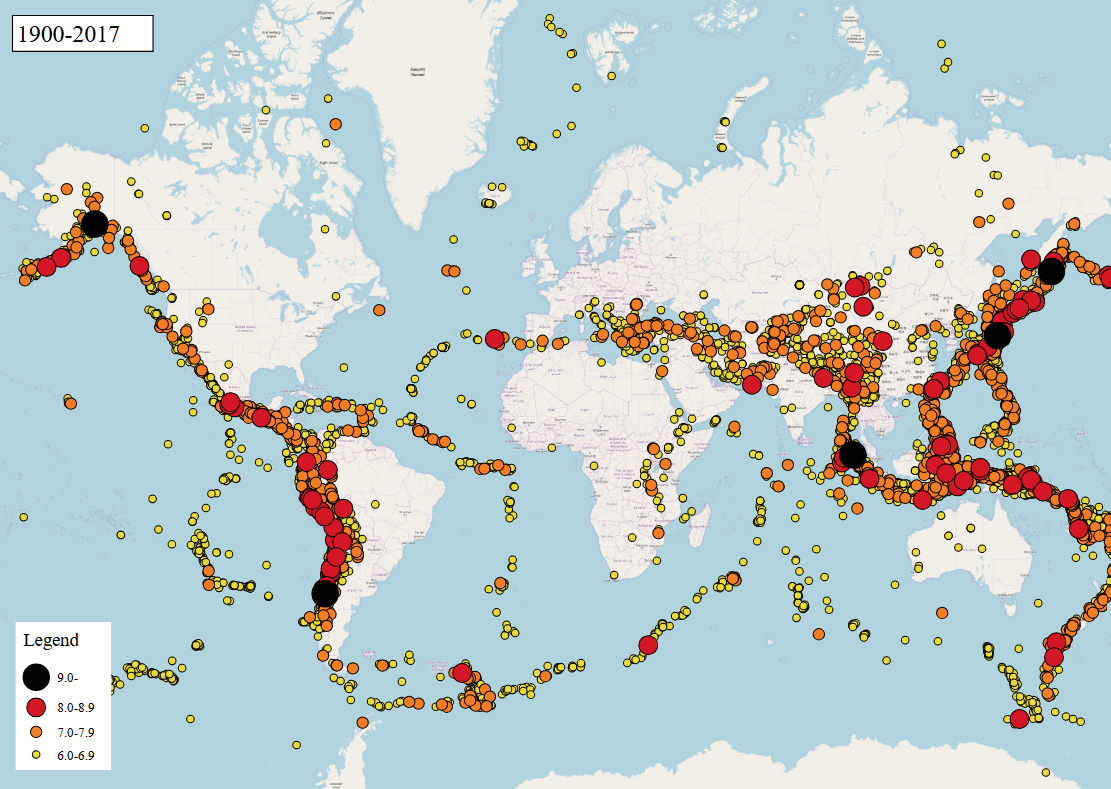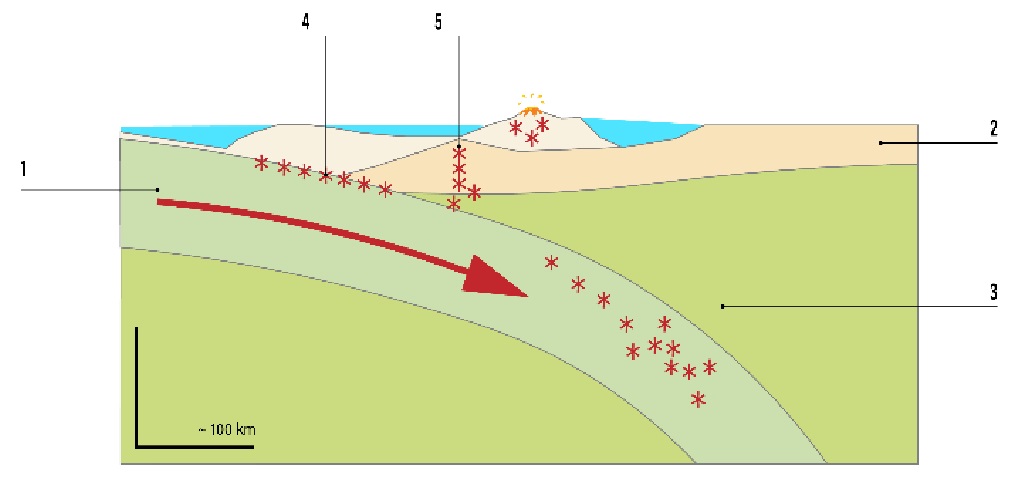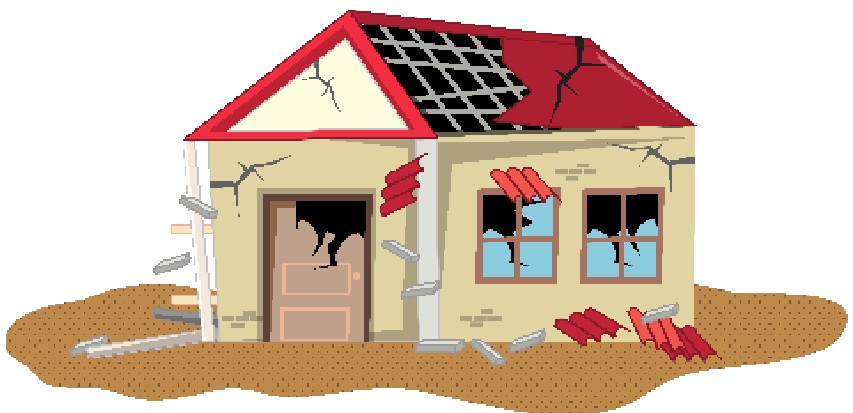RESOURCES SERIES: Earthquake-safe Buildings
ARTICLE 1 in a series of Educational Articles for Developing Nations to Improve the Earthquake Safety of Buildings
ABOUT THIS SERIES OF RESOURCES >>
This is the first of twenty-five articles on how to design and construct buildings, particularly in Developing Nations, against earthquakes. Perhaps you are prompted to ask, “To what extent is my location at risk from earthquake?” An internet search can enable you to view a world map of natural hazards, or you can directly ask the question above for your location.
If you are living in a region susceptible to earthquakes, the chances are that you are close to the edges of an earthquake-prone tectonic plate (Figure 1). These plates tend to move as fast as our finger nails grow! However, the movement is not smooth. At times the sliding becomes stuck, maybe for hundreds of years. Stresses build up. The stress and energy are released by sudden and violent rupture of rock, causing an earthquake (Figure 2).
During an earthquake the ground moves to-and-fro quickly and randomly in all directions. Ground movements during a large earthquake may cause you to become so unsteady you can’t stand. The ground itself can be affected by this shaking, causing earthquake-induced landslides, and liquefaction where wet soil turns to mud. But usually, the buildings we live and work in every day, will suffer the most.
Buildings vibrate, shaking side-to-side during an earthquake. The higher floors of buildings move sideways further than those below as buildings bend and distort during the shaking (Figure 3). This puts enormous stress on the structure, like columns, beams and walls that support buildings. It’s like you standing with both feet on the ground and a friend pushing you gently from behind. Your head and shoulders will move much more than your knees and shins. The muscles in your feet will do most of the work to keep you from falling over. This is similar to what a building experiences during an earthquake. Reinforced concrete columns and masonry walls are the most vulnerable. If they get damaged, buildings may collapse. We, our families, friends and others may be among the casualties.
Fortunately, it’s reasonably straight forward and not overly expensive to design and construct buildings to resist earthquakes. Building damage during earthquakes is not inevitable. It can be prevented! Further articles in this series explain how in greater detail. For new buildings to be both safe and avoid serious damage during earthquakes it’s a matter of improving current practice and applying well-known and proven principles and practices. This is how we can keep ourselves, our families, and our future relatives safe during earthquakes.
Perhaps the chance of a damaging quake severely affecting your location is relatively high. The good news is that earthquake-safe buildings are readily achievable, but they require greater care than usual.

Figure 1. Recent large earthquakes.The earthquakes are grouped according to their magnitudes (released energy) (Wikipedia).

Figure 2. A cross-section through a coastal region showing a tectonic plate (1) sliding under another (2) into the earth’s mantle (3). Earthquakes (4) are generated by this movement and also along active fault-lines (5).

Figure 3. House damaged during earthquake shaking
NEXT ARTICLE >>
RESOURCES SERIES
INTRODUCTION:
About this resources series
- Earthquakes and How They Affect Us
- Avoiding Soil and Foundation Problems during Earthquakes
- Three Structural Systems to Resist Earthquakes
- Why Walls Are the Best Earthquake-resistant Structural Elements
- Are Walls in Buildings Helpful during Earthquakes?
- How Do Buildings with Reinforced Concrete Columns and Beams Work in Earthquakes?
- Principles for Earthquake-safe Masonry Buildings
- Tying Parts of Buildings Together to Resist Earthquakes
- Local Wisdom and Building Safety in Earthquakes
- Infill Walls and How They Affect Buildings during Earthquakes
- A Common Structural Weakness to Avoid: Soft Story
- A Common Structural Weakness to Avoid: A Discontinuous Wall
- A Common Structural Weakness to Avoid: Short Column
- Preventing a Building from Twisting during Earthquake
- Why Buildings Pound Each Other during Earthquakes
- Construction Codes and Standards
- What to Look for in Building Regulations
- What to Expect from a Building Designed according to Codes
- Importance of Checks during the Design of Buildings
- Importance of Checks during the Construction of Buildings
- Preventing Damage to Non-structural Components
- Retrofitting Buildings against Earthquake
- Advanced Earthquake-Resilient Approaches for Buildings
- Urban Planning and Earthquake Safety
- Tsunamis and Buildings
